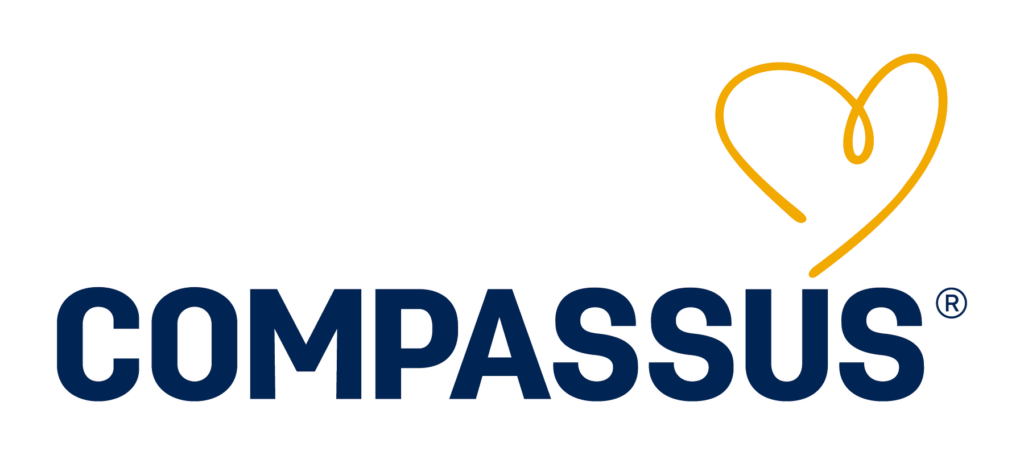Maintaining tele-hospice and updating care models are essential

Kurt Merkelz, M.D.
Maintaining tele-hospice and updating care models are essential
While telehealth is not new to hospice, recent experience clearly confirms its potential to support innovative models of person-centered quality care. In this MedPage Today article, Compassus Senior Vice President and Chief Medical Officer Dr. Kurt Merkelz explains how leveraging remote communication tools can enhance the in-person care that is the cornerstone of hospice and help build incentives for better care and outcomes for Americans at the end of life.
This article was originally published by MedPage Today.
Hospice, like most healthcare sectors, saw a rapid rise in telehealth use in response to the COVID-19 pandemic. When many hospices found themselves locked out of patients’ homes or long-term care facilities, they pivoted to telehealth to maintain service levels for patients and families. CMS issued temporary waivers that made it possible to maximize flexibility in the face of the pandemic.
Unfortunately, the opportunity for hospice to leverage telehealth to its fullest potential to impact care for the most frail and vulnerable may not outlast the pandemic. As the country and regulations return to normal, CMS has yet to fully recognize the value of increased telehealth utilization in one of the most important areas of healthcare: hospice and the last days of life.
Advantages of Tele-Hospice
The Medicare Hospice Benefit has been available since 1983 and represents one of the most innovative and effective care delivery models in Medicare. It is person-centered, leverages interdisciplinary team (IDT) care, and uses a value-based managed care payment system that includes a per diem payment within a maximum annual payment cap per provider. This is the earliest example of a benefit designed to reduce total spending for Medicare while increasing access and improving outcomes, all while providing the majority of care where patients and families want it most — in their own homes.
While telehealth is not new to hospice, recent experience clearly confirms its potential to support innovative new models of care. That’s not to say tele-hospice could ever replace traditional in-person care. Telehealth cannot provide the personal touch and calming presence that are cornerstones of care provided at the end of life. It can be utilized, however, to provide much of what is needed for patients and families to succeed in their end-of-life journey, such as professional guidance, education, and other forms of support.
Leveraging use of telecommunication devices has tremendous potential to improve hospice services and quality, including patient-identified needs. Evidence suggests that using remote communication tools positively impacts access, quality, outcomes, and costs of care. Consider, for example, what we already know patients and families need most from hospice at the end-of-life. Individuals want to have their symptoms managed, retain autonomy, age in place, and reduce the burden on others while having support for their own safety and quality of life.
Telehealth technology gives hospice the potential to support patient- and family-centered preferences and provide timely care directly to the home. By leveraging specific care methodologies designed to
train and support families, hospice providers can achieve the quadruple aim of health — driving access, cost, quality, and provider and patient satisfaction.
CMS’s Fiscal Year 2022 Hospice Payment Rate Update Proposed Rule, however, neglects to add codes for telehealth visit claims. Without this mechanism to collect telehealth claim data, CMS undervalues the total impact of all visits, including in-person and telehealth. This undermines the potential importance of telehealth as innovative modality to improve person-centered quality care and creates a disincentive for hospice providers to use or invest in it.
Regulatory Opportunities
Tele-hospice is not the only aspect of care that CMS can address to strengthen care delivery. Other opportunities for regulatory adjustments would support fresh ways of thinking about how to enhance patient outcomes.
Achieving patient-identified outcomes, including pain and symptom relief and spiritual and social needs, requires all members of the hospice IDT. Under measures introduced by CMS earlier this year, however, Medicare validates the importance of only two disciplines: the registered nurse and social worker.
Specifically, CMS introduced Hospice Visits in the Last Days of Life (HVLDL) — to replace the Hospice Quality Reporting Program (HQRP) measure pair — and also removed a section of the Hospice Item Set (HIS) discharge assessment. The HVLDL measure utilizes hospice claims data and only captures claims data for the proportion of patients receiving in-person visits by a registered nurse or social worker in at least 2 of the last 3 days of life.
This flawed methodology invalidates the value and impact on hospice patient outcomes of chaplains, licensed practical nurses and aides — all critical and valued IDT team members throughout a patient’s end-of-life journey.
First, consider chaplains. Some of the most important care that can be delivered to a dying patient is in the realm of spirituality, and providing spiritual care is a foundation of the Medicare Hospice Benefit. Since CMS does not require chaplain visits be reported on claims and without the HIS data reporting that was recently eliminated, CMS has closed off its only line of sight on the critical value of chaplain visits.
Additionally, hospice aide services are at times vital and, through patient-centered interactions, have been identified by families as important during an individual’s final hours. LPNs also have a critical role in providing quality patient-centered, evidenced-based care to vulnerable groups across the healthcare continuum and at end-of-life. Yet, CMS excludes the services of aides and the care provided by LPNs, the latter of which are not even considered “nurses” under CMS hospice reporting guidelines.
Visit data collection, including telehealth visits, for patient-reported outcomes should be guided by individualized care plans reflective of patients’ and families’ wishes. The visits by all core members of the IDT should be reflected in any measure of quality during the last days of life.
Additional reporting metrics are equally confusing. In the newly developed Hospice Care Index, CMS proposed to include the number of minutes the RN is in a patient’s home during routine home care, as well as time between nurse visits of greater than 7 days as so-called “quality” metrics. To those of us deeply invested in hospice quality outcomes, it’s difficult to discern what kind of outcomes could be associated with this measure. Where did this standard come from, and at what point is a nurse visit “long enough” to create the best outcome? Patient-centered care should be the goals, not the number of minutes that have elapsed during or between visits.
Time for a Fresh Perspective
The outcomes data we get at the end of life are outputs of the design and dictates of the current system. Looking only at claims-based visit data provides a very narrow view of hospice that is not reflective of the true value delivered to Medicare hospice beneficiaries. This may cause hospices to lean away from developing new models of care that improve quality and service.
The future holds promise, though. Approaches such as the Hospice Outcomes & Patient Evaluation (HOPE) assessment for gauging hospice patient needs during care — which CMS began developing in 2019 and is now preparing to beta test with providers — is a step in the right direction. The industry needs more of that kind of thinking — regulations and recommendations that build incentives for better care and better outcomes for Americans at the end of life. Now is the time for CMS to support the creation of evidence-based care models to drive the system toward improved results.



